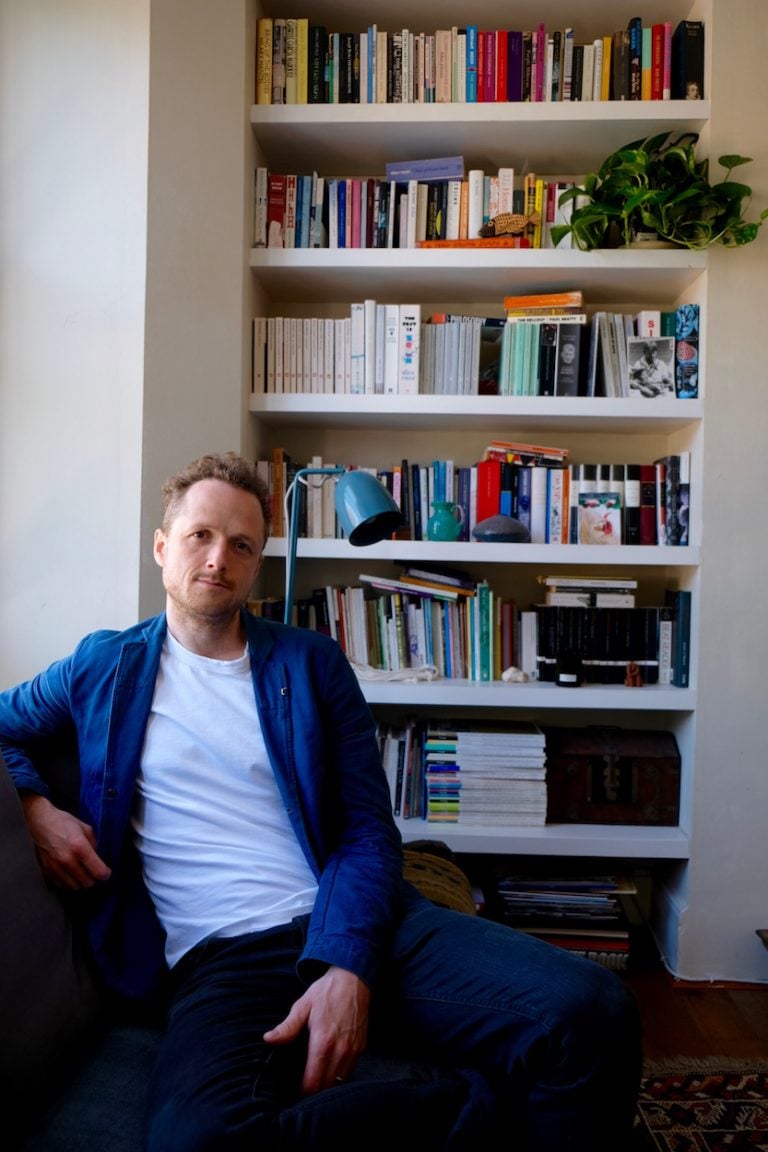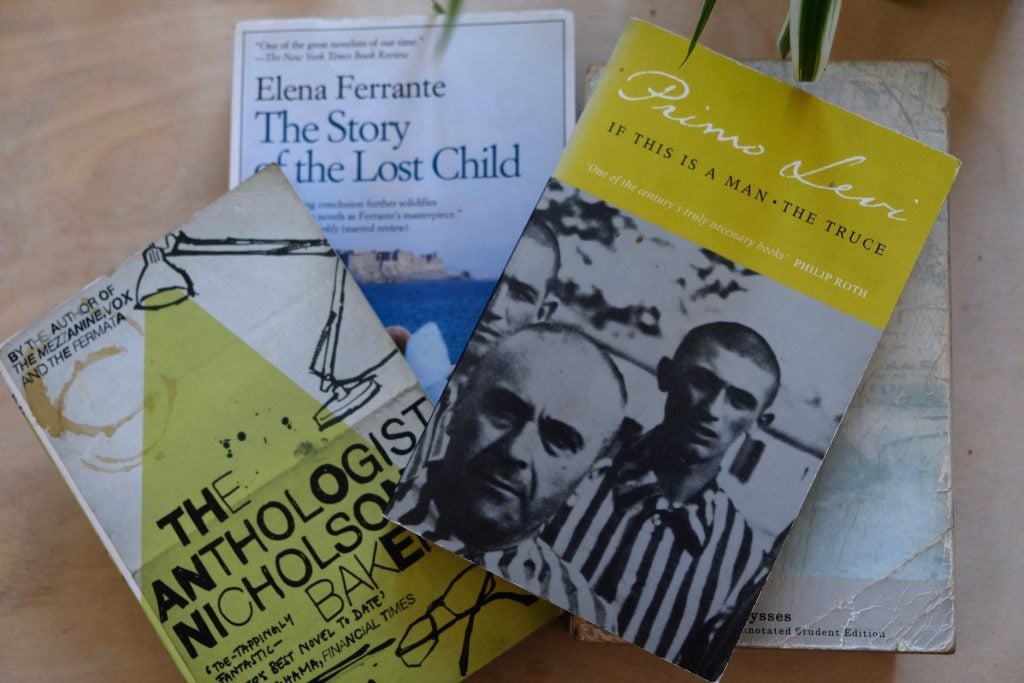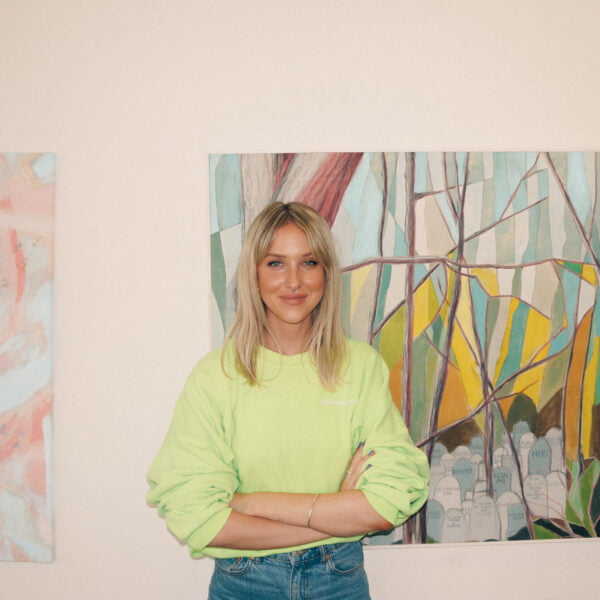
Natasha Collie
Senior Brand Marketing Manager at Penguin Random House UK
At the start of the year, Ladybird Books approached Sonder & Tell with a dream brief. In 2021, a year that’s been particularly challenging for...
In conversation with
Journalist, co-founder at The Gannet

Imagine if you could spend your days visiting chefs at home, asking them to cook you their favourite dish. So it is for The Gannet, an online magazine which explores the lives of people through food. Since launching in 2015 they’ve sat down to pasta with Rachel Roddy in Rome, Moroccan chicken with Zoe Adjonyoh and barbecued quail with Fergus and Margot Henderson. The sky’s the limit for this greedy seabird.
Killian Fox is a London-based journalist and one of the The Gannet’s editors and co-founders (alongside the filmmaker Adam Park and photographer Yousef Eldin). As well as piecing together the day-to-day website he works on The Gannet’s print magazine Fork in the Road, with a new issue dedicated to the culinary delights of his native Ireland. Killian also penned The Gannet’s Gastronomic Miscellany, a collection of musings on fantasy breakfast, fun facts and forgotten kitchen wisdom.
It’s not all food for Killian, mind. A regular contributor to The Observer, he writes about about arts and culture (including music, film and books). “What connects it all,” says Killian, “is an interest in other people and what they do and think”. He’s the only writer we’ve met who has the guts to include Ulysses on his storylist – but he’s Irish so he gets away with it.
As a kid, I was obsessed with the Tintin and Asterix books and would read them on repeat, usually while eating my dinner after school. (I could claim that Tintin made me want to be a journalist but that would be a complete lie. But he probably did instill in me a sense of adventure and a desire to travel). I read a lot of rubbish fantasy novels and a few good ones (the Earthsea books by Ursula Le Guin). The first “grown-up” book I read was The Wasp Factory by Iain Banks, which has probably scarred me for life.

Not directly, I didn’t really plan to become a journalist, it kind of happened by accident. One thing I read early on that totally floored me (but has very little bearing on what I write now) was Hiroshima by John Hersey.
A few years ago, I came up with an idea for an online magazine: to visit interesting people at home and get them talking about food while they cook a favourite dish. I mentioned it to a couple of friends – the photographer Yousef Eldin, the filmmaker Adam Park – and they were keen to get involved (we were later joined by another photographer/filmmaker, Dan Dennison). The core idea for The Gannet hasn’t changed very much (the tagline is “People’s lives through food”), but we’ve expanded beyond the website into print and film. I wrote a food book called The Gannet’s Gastronomic Miscellany, which came out last October. Adam is currently filming The Amber Light, a documentary about Scotch whisky and the culture around it. And we’re just about to launch the second issue of our print magazine Fork In The Road, which zeroes in on particular food destinations (this issue covers Ireland and it’s a cracker).


I’m particularly fond of the Gannet interviews with Tim Hayward, Annie Gray and Anna Koska. Spending a boozy morning with Fergus and Margot Henderson was a personal highlight, as was a long weekend in Rome with Rachel Roddy.
The Gannet’s Gastronomic Miscellany is actually quite different from the Gannet website. It’s a collection of amazing food stories, facts and curios – you’ll find vital info on zoophagy, bog butter and Liberace’s seven dining rooms – rather than interviews. But there is a bit of crossover: I pulled out some of my favourite topics from Gannet conversations – dream breakfasts, comfort food, kitchen wisdom – and included the standout answers in the book. The comfort food suggestion that most appeals to me is to heat up some frozen peas after a long day’s work and eat them simply with olive oil and black pepper.

We don’t publish at a crazy rate (it’s two or three pieces a week rather than 10 a minute) so we usually digest the entire month’s activity in our monthly newsletter. We also do our Digest column, James Hansen’s weekly pick of the best online food media, in a separate newsletter. To add a bit of a personal touch, we talk about what each of us has been up to at the end of the main newsletter. Food-wise, I like the newsletters from Lyle’s and Quo Vadis. More generally, I’d recommend the Noticing newsletter from Kottke.org.
“The most difficult part of food writing is actually describing the experience of eating something, and how it tastes, without falling back on obvious adjectives like 'delicious'”
I always find that the most difficult part of food writing is actually describing the experience of eating something, and how it tastes, without falling back on obvious adjectives like “delicious”. Which is why I have great respect for restaurant critics who navigate this every week – Jonathan Gold at the LA Times does it brilliantly (a mole negro, he writes, is “so dark that it seems to suck the light out of the airspace around it, spicy as a novela and bitter as tears.”) as do Jay Rayner in the Observer and Marina O’Loughlin in the Sunday Times. I really enjoyed Grace Dent’s piece about processed food recently. She explores the contradictions and hypocrises around how we eat with great panache. Her line about how McCain’s Potato Smiles pair well “with a big scoosh of Blue Dragon sweet chilli dipping sauce, a pint of Gold Blend, 400g of ibuprofen and a long stare out the window” made me laugh out loud.
The last book I read was We Have Always Lived in the Castle by Shirley Jackson. It engages with food in an interesting and quite mad way – it’s a source of comfort for the main characters but also a murder weapon, an object of ritual and maybe even a sublimation of their erotic desires.

The first cookbook that really appealed to me was Appetite by Nigel Slater and I still pick it up from time to time. I’ve probably cooked more from The Food of Spain by Claudia Roden than any other book (I have a paper Santiago cross marking the tarta de santiago recipe page). I love Sarit and Itamar who run Honey & Co in central London and I also love their cookbooks (the chicken pastilla recipe from the first book is splattered with several layers of chicken and date sauce). Diana Henry’s Food From Plenty is a regular (I use her apricot cake recipe as a base for various fruit cakes). The book I’ve been meaning to take a serious look at is Japanese Cooking: A Simple Art by Shizuo Tsuji.

I don’t read an awful lot of food magazines, but I was sad to see Lucky Peach go, and The Gourmand has some great ideas. More generally I subscribe to the New Yorker and am always (hopelessly) trying to keep up with the torrent of must-read articles.

Kottke.org is good at digging up miscellaneous items of interest from all parts of the web. Pitchfork can be a bit annoying but I usually skim the album reviews every morning. My bad habit is refreshing the Guardian homepage every five minutes or so. I enjoy Chris Pople’s restaurant reviews at Cheese and Biscuits.
Ulysses by James Joyce, If This is a Man by Primo Levi and The Neapolitan Quartet by Elena Ferrante. And for a humorous counterbalance: The Anthologist by Nicholson Baker.

A very simple pasta with tomato sauce, Leandro Carreira’s Portuguese seafood stew, chocolate tart with raw-milk cream and raspberries.

Senior Brand Marketing Manager at Penguin Random House UK
At the start of the year, Ladybird Books approached Sonder & Tell with a dream brief. In 2021, a year that’s been particularly challenging for...

Founder Of Simple Politics
Talking about serious issues doesn’t mean defaulting into a serious tone of voice, or using complicated language. If anything, accessibility, clarity and a touch of...

Brand & Community Manager at Homethings
Creating a tone of voice from scratch can be challenging. But a blank slate to work from also mean there’s room for something a bit...

Journalist, broadcaster, author Tenants

Travel Journalist